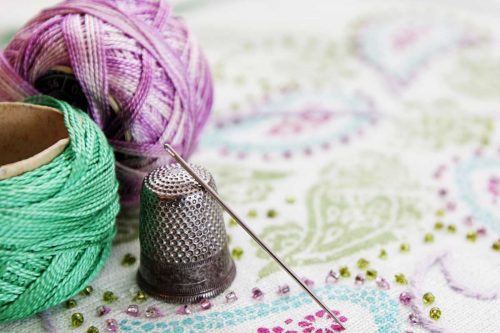"Glass blowing" used to be done by building a furnace and heating logs to melt the glass. The development of blow torches has made glass blowing easier and less time-consuming. But are propane torches effective for glass blowing? Here is what we've found.
Propane torches are commonly used to blow glass. However, propane is not the only element needed for the torch to blow glass effectively. To melt glass, the flame must be at a specific temperature, so a pre-mix torch containing propane and oxygen is needed for the best effect.
Keep reading to find out how the propane torches work, safety tips to consider when glass blowing, and how to use different types of glass to create beautiful glass art.
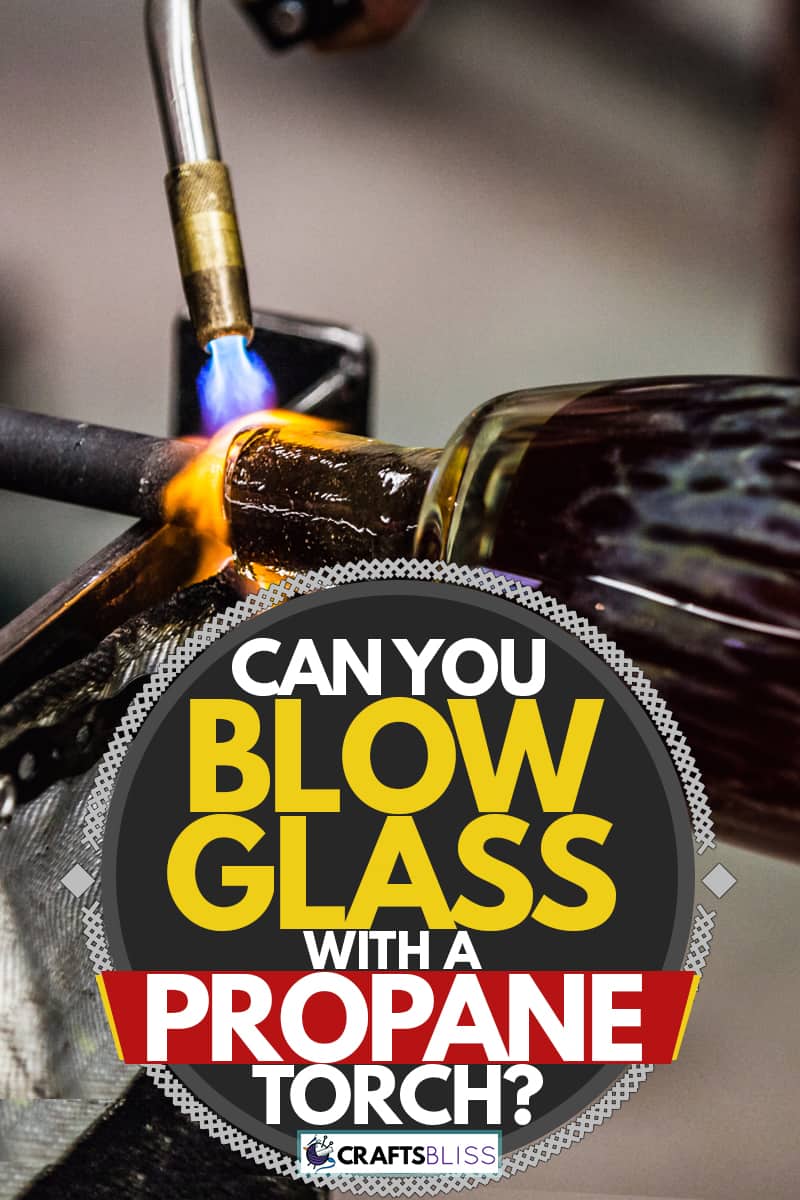
How does the propane torch work to blow glass?
The flame must be at a certain temperature specific to the type of glass you are using to melt and shape it. To create a flame, you need fuel, which in this case, is the propane, but the flame needs exposure to air to reach the proper temperature required for glass blowing.
Compressed air won't allow the flame to reach the needed temperature, so oxygen is used because it is the only gas that will make the flame hot enough to melt and shape the glass. Oxygen is corrosive, so it is essential to ensure that you use the proper type of propane torch.
A pre-mix torch is the best kind of torch to use for most types of glass blowing. This is because pre-mix torches can create a concentrated flame that can burn hotter than other flame torches. A pre-mix torch is one where propane and oxygen are mixed inside a chamber within the torch.
A typical glass blowing torch is hand-held. The glass you are working with is held stationary on the workstation by clamps, and the torch is brought to the glass. Some torches are connected via a hose to an air cylinder, while others have an air cylinder directly connected to the torch.
Check out this torch commonly used for glass blowing on Amazon.
Types of Torch Tips
There are interchangeable tips that can be used for your torch to control the size and temperature of the flame. The tips are usually numbered and can be purchased with some torches as a kit or purchased separately. The tips work by controlling the amount of oxygen that is allowed to mix with the flame. Three common flame types are:
- The oxidizing flame- an intense, high-oxygen flame used for heating small, concentrated areas.
- The neutral flame- a versatile, balanced flame used for many purposes.
- The reducing flame- a soft, low-oxygen flame used for preheating the glass.
Check out this torch can be purchased with the tips.
What types of blown glass can you create with a propane torch?
There are many possibilities for the types of blown glass that can be created with a propane torch, but before we dive into what you can create, we need to look at the types of glass used for glass blowing.
Types of Glass
Lead Crystal and Soda-Lime
Lead crystal and soda-lime glass are the two most commonly used types of glass for glass blowing. These are "soft" glasses and are very malleable and easy to shape when melted. They are used by heating the glass with a torch and blowing through a tube to create round glass ornaments.
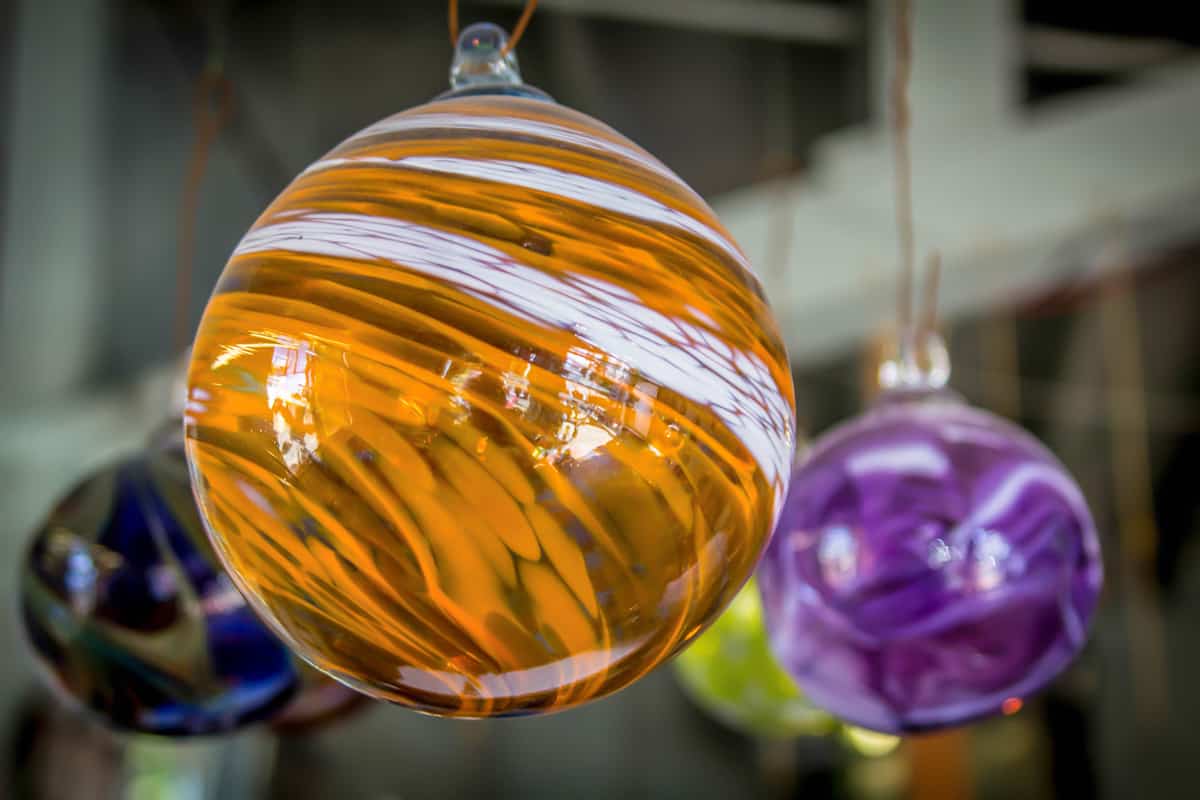
Borosilicate Glass
Borosilicate glass is a type of "hard" glass, which means that it requires higher temperatures to shape and form, so it is most commonly used with a torch with high-temperature flame in a glass blowing technique called lampworking. This technique is used for more creating more intricate glasswork such as glass beads or figurines.
Glass Blowing Safety
Before you start glass blowing, there are many safety hazards you need to be aware of, from respiratory hazards to cuts and burns to high levels of heat. Here are some safety precautions you need to take to prevent putting yourself at risk.
Respiratory hazards that may arise from glass blowing include inhaling fumes or particulates that different kinds of glass may emit while being heated. To minimize the respiratory risks, make sure you are glass blowing in a well-ventilated area. Examples of a well-ventilated area include a workspace with a window at each end and exhaust fans to suck out the air with fumes or particulates. Wearing a respirator can also help reduce risks.
When using a high-temperature propane torch, burns can occur. First, second, and third-degree burns are possible, and burns can cause skin reddening, blisters, and shock. Third-degree burns usually only happen when a glassblower picks up or brushes against a hot piece, but they can happen.
Glass also contains sharp edges when it is cooled. The best way to protect yourself from cuts and burns is to wear gloves. Padded welder's gloves are a good choice, but they need to be replaced frequently because of the high temperatures. Kevlar gloves are a good choice for minimizing the risk of being cut.
Check out these welding gloves on Amazon.
How do you blow glass with a propane torch?
Blowing glass with a torch is a unique process. To make it easier to follow, we will break it down into smaller segments.
Melting the Glass
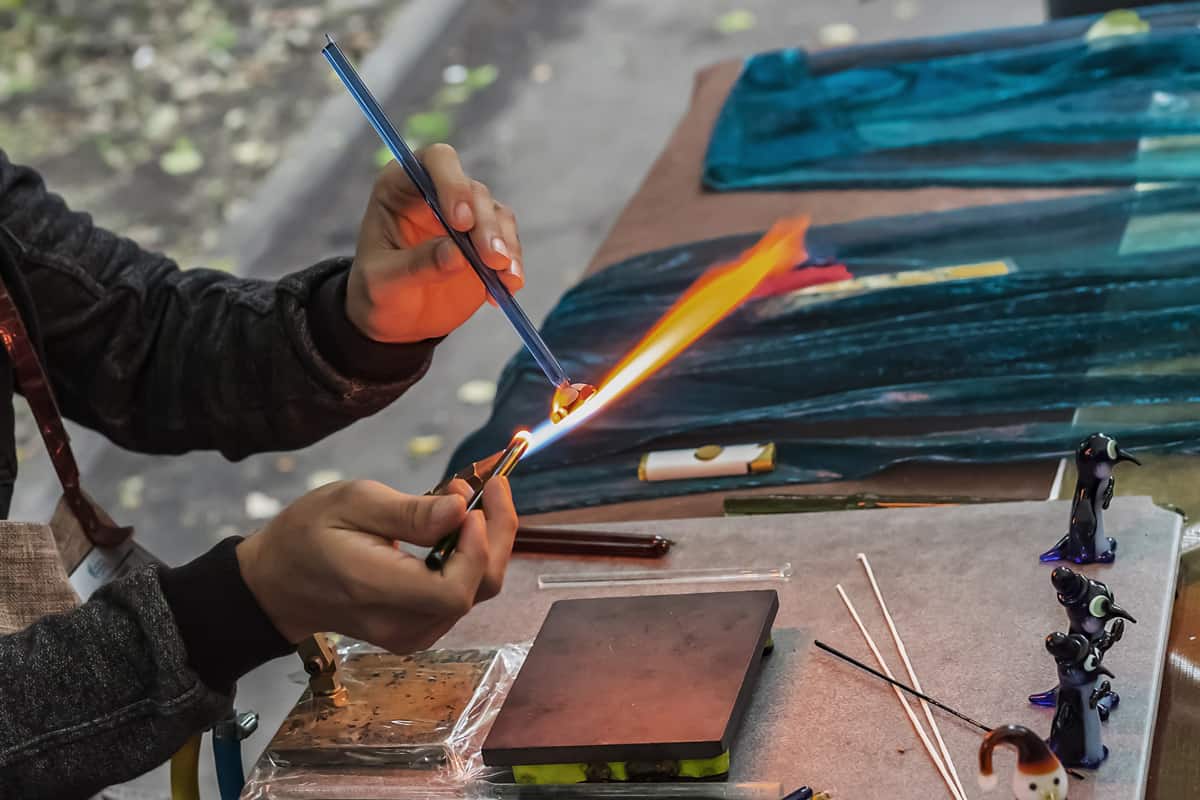
- Ignite the flame on your torch and position the flame so that the blue portion is touching the glass.
- Move the flame across the glass. Be sure that your strokes are consistent so that the heat is distributed evenly.
- Heat the glass until it begins to glow slightly orange (usually about 5 minutes). The glass will start to melt.
Shaping the Glass
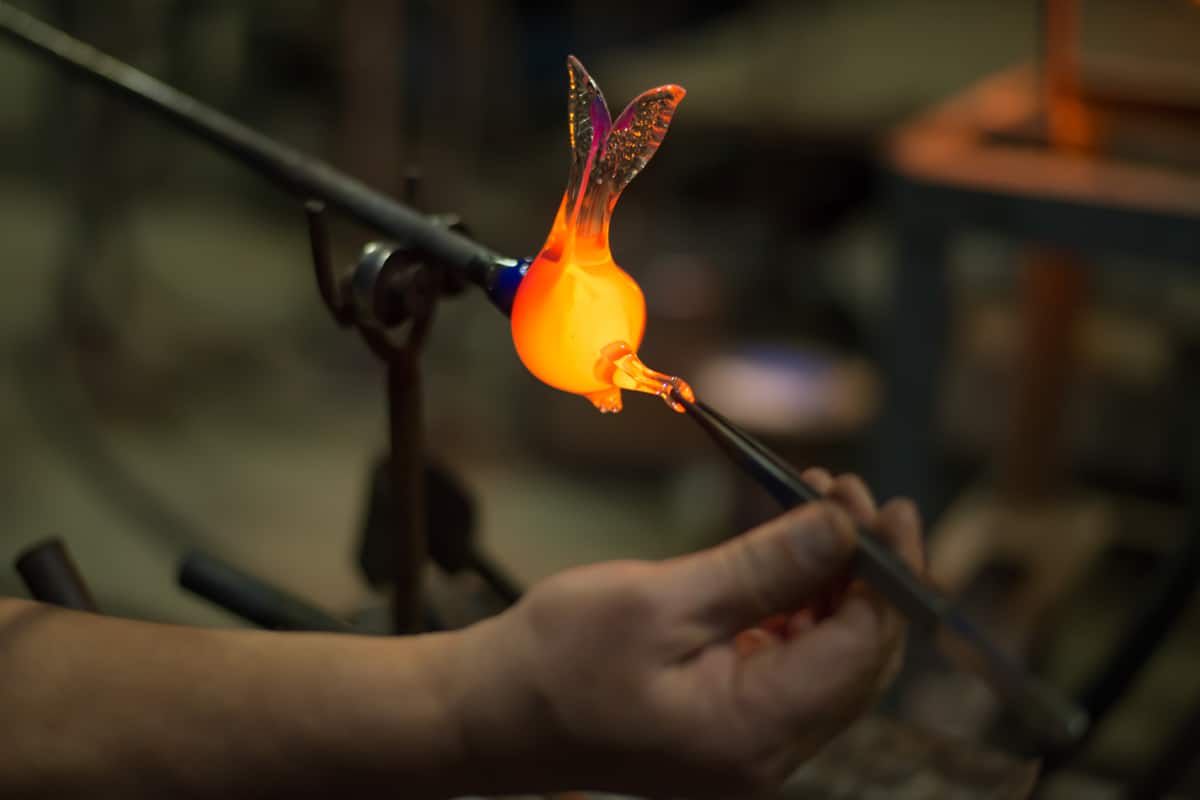
The way you shape glass depends on what you are trying to make. Below are the steps to create a glass ornament using a torch, a glass pipe, and a blow tube.
- Light your torch and set it on a table.
- Heat the glass tube by following the steps above until the glass begins to melt.
- Blow a few small puffs of air into the blow tube. The air will travel through the tube and into the molten glass.
- Be sure to continually spin the molten glass to maintain the circumference of the ornament all the way around while keeping the pipe centered in the glass.
- Continue to heat the glass and blow into the tube until your ornament is as big as you want it to be.
You can create more intricate glass pieces with a propane torch using borosilicate glass. This involves fusing pieces of glass and shaping them with tweezers. ">Watch this video to learn how to create a glass sculpture of a horse.
Cooling and Finishing the Glass
To cool the glass, you will need to separate the hot glass from the blow tube. You will need to heat the area where the glass is attached to the tube.
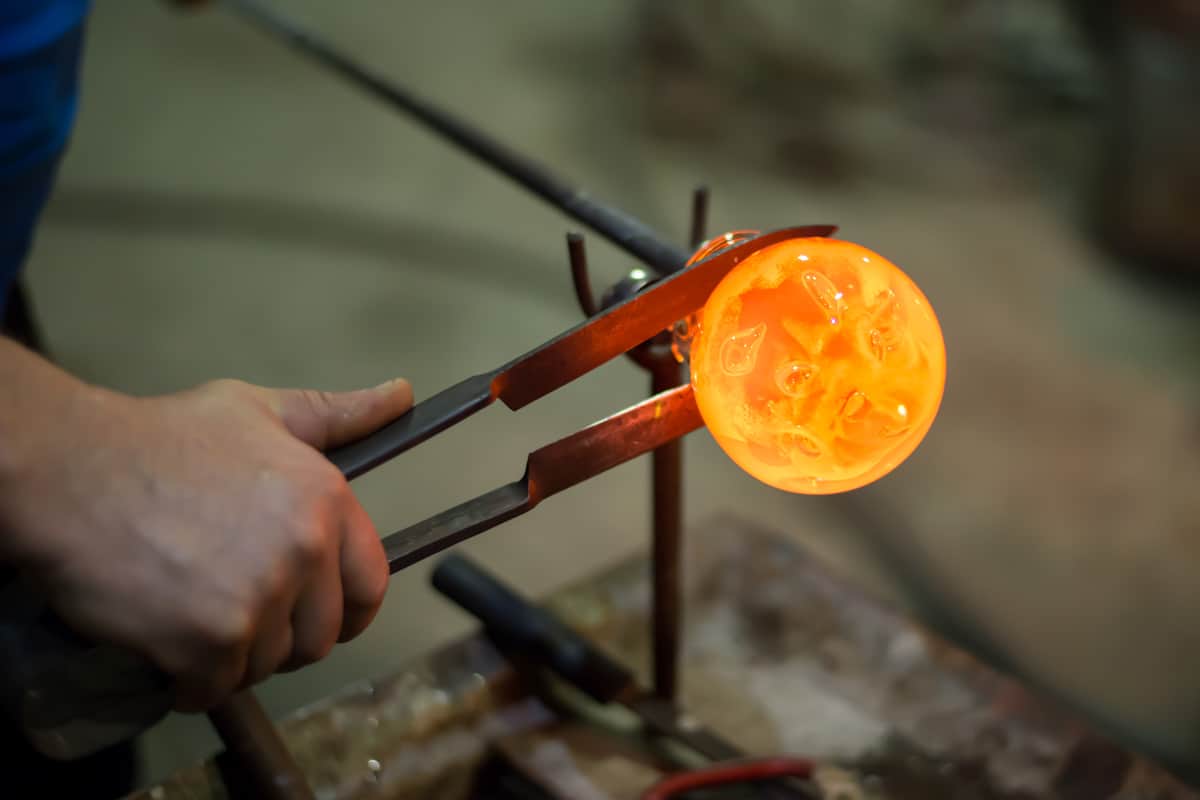
- After the glass has melted, use steel tweezers to carefully cut the glass away from the tube and pull the blown glass off. You may have to tap the tube once to remove the glass entirely. Tapping more than once can cause the glass to break.
- Wearing heat resistant gloves, transfer the blown glass into a special kiln called an annealing oven. The oven should be kept at 960° F. To keep the glass from cracking, cool it down to room temperature over 14 hours.
- After the glass has cooled to room temperature, check for sharp edges. Use a grinding block to remove any sharp edges that you find carefully.
How hot is a propane flame?
The flame has to be at least 1000 degrees Fahrenheit to affect the glass at all. "Soft" glass begins to soften between 1,175° F and 1,250° F. Borosilicate glass begins to soften at 1,508° F. Propane torches that are fueled by oxygen can have a flame temperature that reaches up to 4,600° F, with the flame being the hottest at the tip of the center flame.
Can you blow glass with a butane torch?
Butane torches can be used for blowing glass, but they are best suited for soft glass because they don't reach a high enough temperature for melting borosilicate glass. The maximum temperature of a butane flame is 2,400° F, so if you want to work with borosilicate glass, then a propane torch is the best option.
Bottom line: propane torches make glass blowing easier!
Thanks to propane torches, we've come a long way from having to build a furnace to create things out of glass. Propane torches have certainly made glass blowing easier and less time-consuming. Be sure to use the proper type of torch and follow all of the safety precautions so that you can have a successful glass blowing hobby or career.




![Read more about the article Can You Glue Fabric To Leather? [Products & Steps Included]](https://craftsbliss.com/wp-content/uploads/2023/01/In-workroom-girl-makes-purse-with-brushglueleather.-500x333.jpg)
